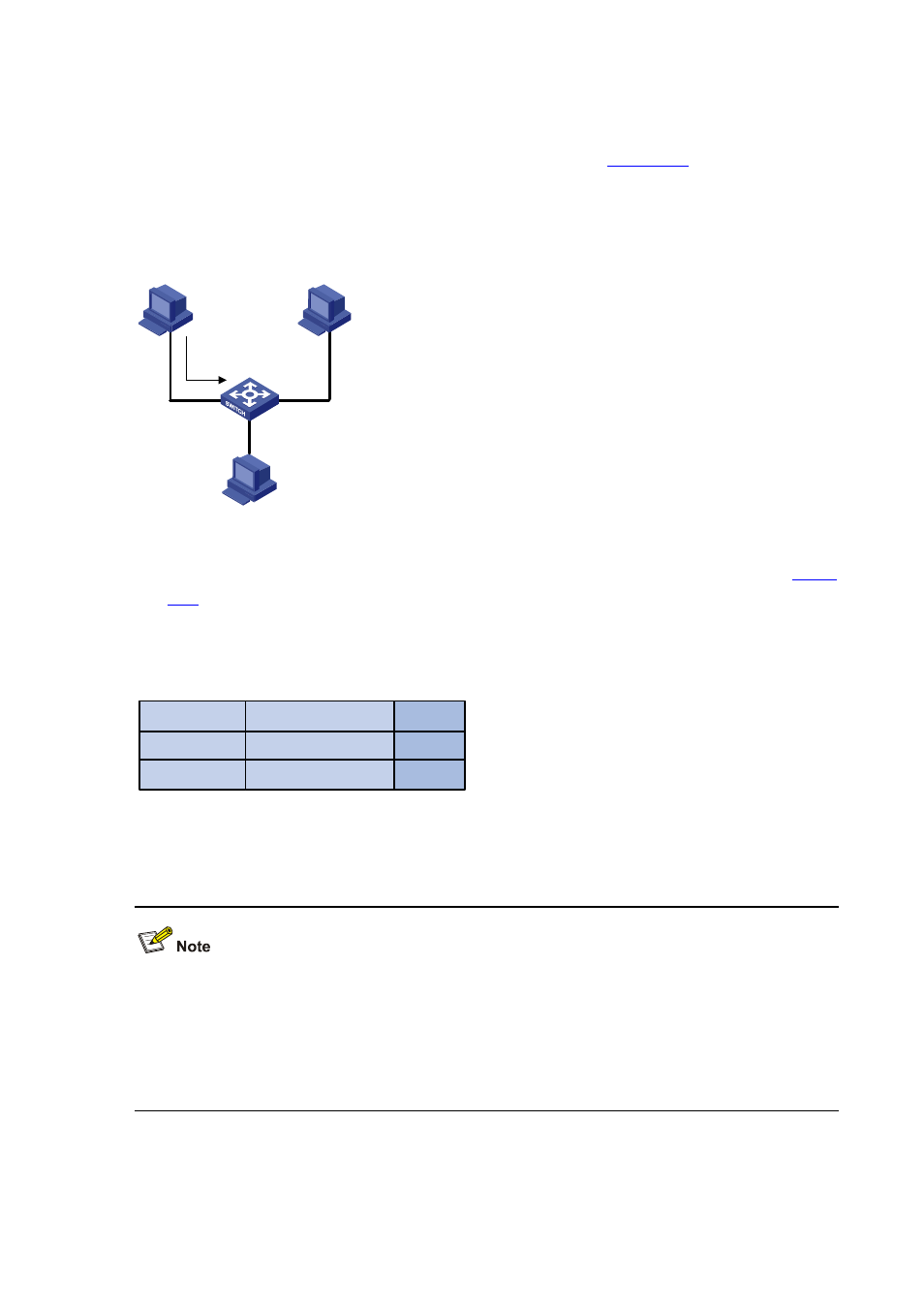H3C Technologies H3C WX3000 Series Unified Switches User Manual
Page 164

21-3
3) Because the device broadcasts the packet, both User B and User C can receive the packet.
However, User C is not the destination device of the packet, and therefore does not process the
packet. Normally, User B will respond to User A, as shown in
. When the response
packet from User B is sent to GigabitEthernet 1/0/4, the device records the association between
the MAC address of User B and the corresponding port to its MAC address table.
Figure 21-4
MAC address learning diagram (3)
Geth 1/0/1
Geth 1/0/3
Geth 1/0/4
User A
User B
User C
4) At this time, the MAC address table of the device includes two forwarding entries shown in
. When forwarding the response packet, the device unicasts the packet instead of
broadcasting it to User A through GigabitEthernet 1/0/1, because MAC-A is already in the MAC
address table.
Figure 21-5
MAC address table entries of the switch (2)
Port
VLAN ID
MAC-address
GigabitEthernet1/0/1
1
MAC-A
GigabitEthernet1/0/4
1
MAC-B
5) After this interaction, the device directly unicasts the communication packets between User A and
User B based on the corresponding MAC address table entries.
z
Under some special circumstances, for example, User B is unreachable or User B receives the
packet but does not respond to it, the device cannot learn the MAC address of User B. Hence, the
device still broadcasts the packets destined for User B.
z
The device learns only unicast addresses by using the MAC address learning mechanism but
directly drops any packet with a broadcast source MAC address.